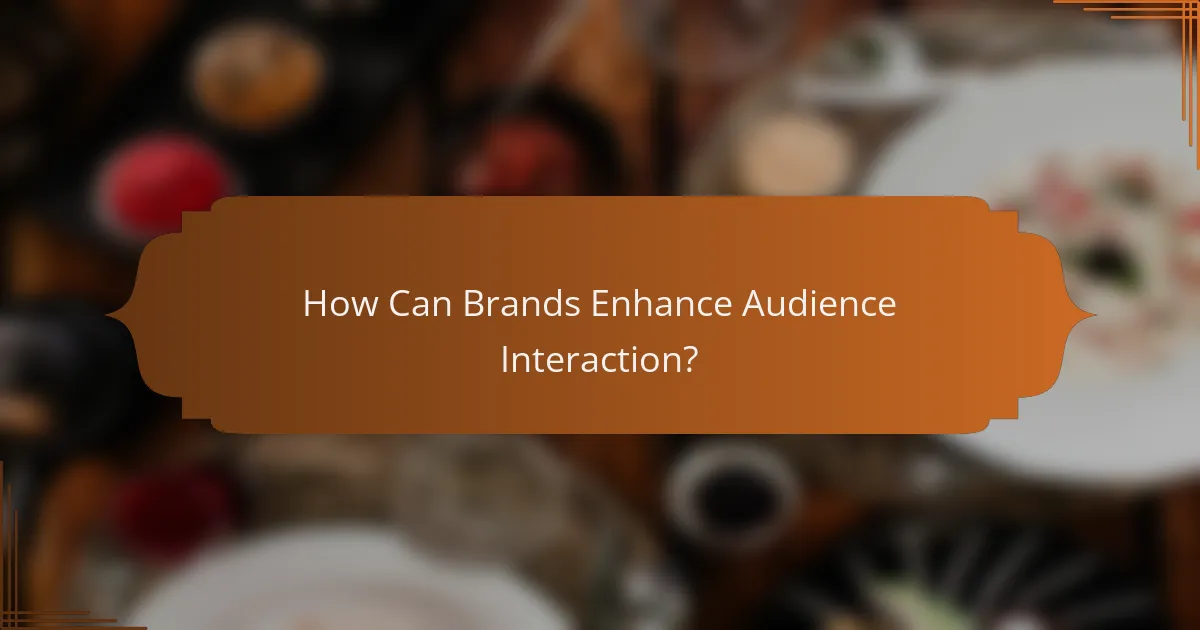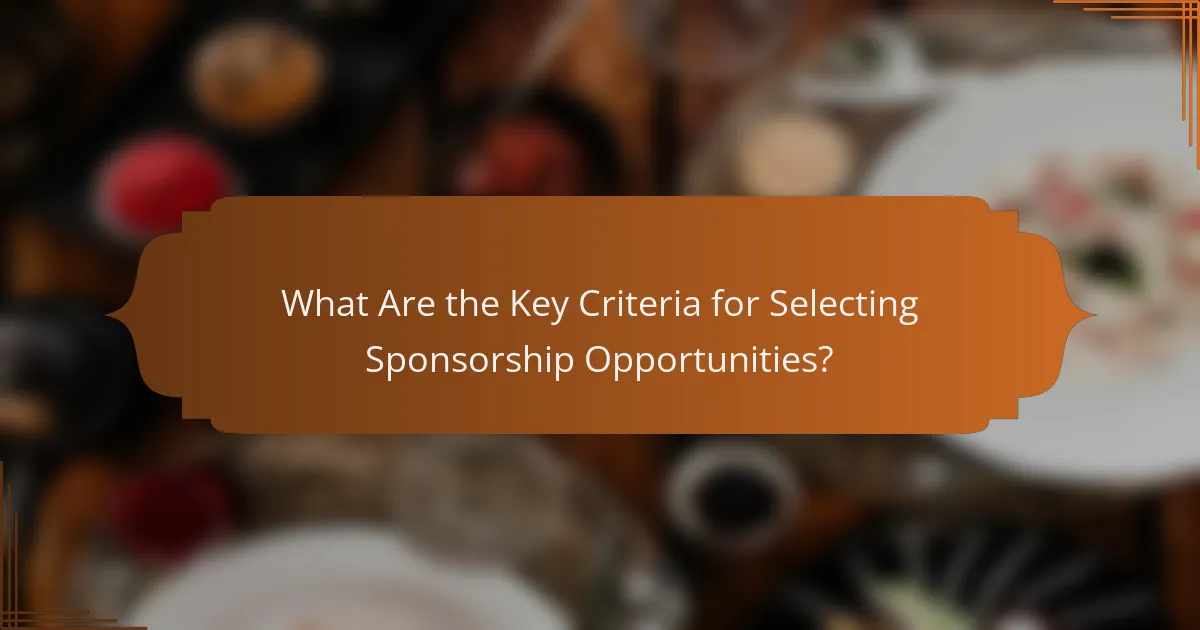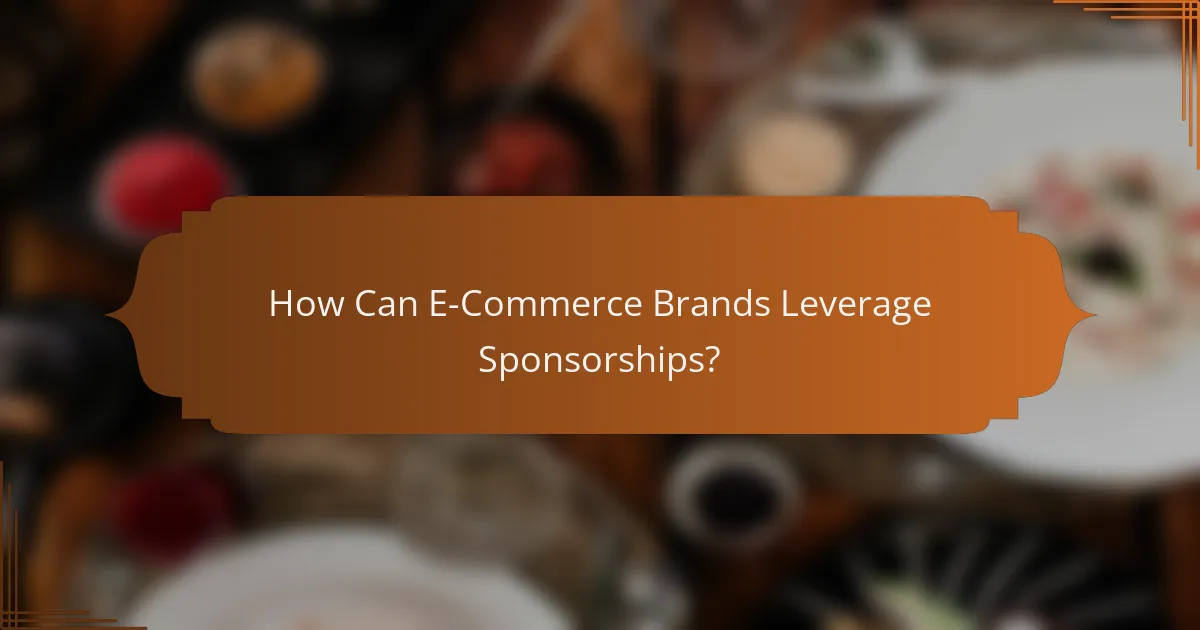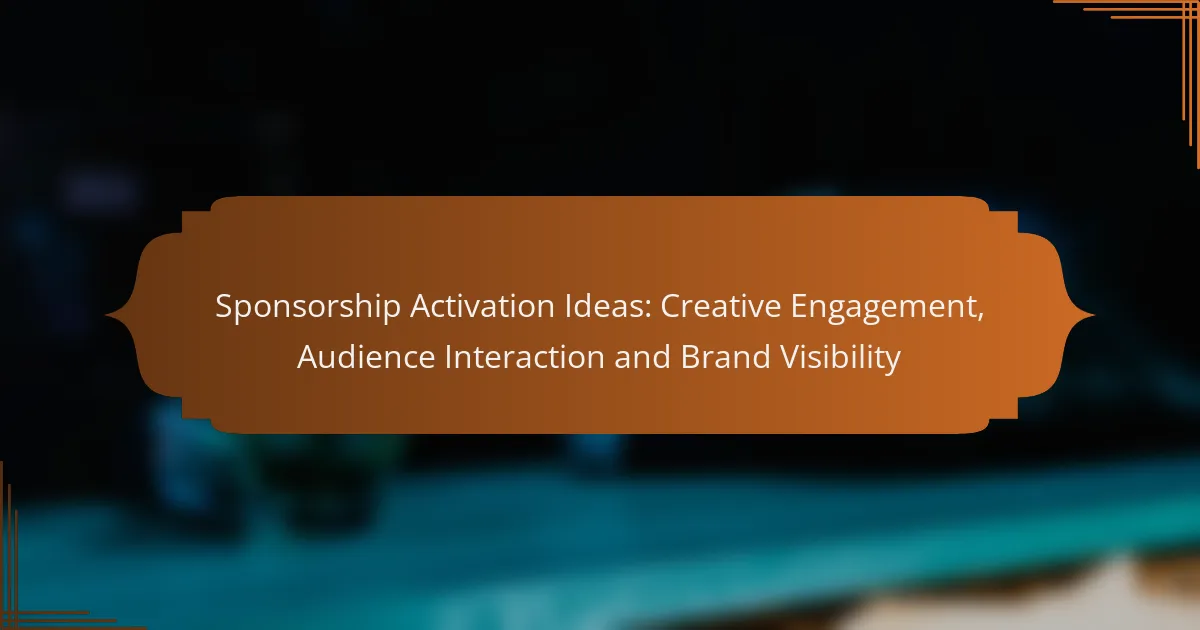In today’s competitive landscape, effective sponsorship activation ideas are essential for engaging audiences and enhancing brand visibility. By incorporating creative strategies that promote interaction, brands can create memorable experiences that foster strong connections with their target market. Utilizing tools such as live polling, gamification, and augmented reality can significantly enhance audience involvement and loyalty.

What Are Effective Sponsorship Activation Ideas?
Effective sponsorship activation ideas are strategies that engage audiences, enhance brand visibility, and create memorable experiences. These ideas leverage creativity and interaction to build a strong connection between the brand and its target market.
Experiential Marketing Events
Experiential marketing events immerse participants in a brand’s story through engaging and interactive experiences. These events can range from pop-up shops to immersive brand activations at festivals, allowing attendees to connect with the brand on a personal level.
Consider hosting a live event that showcases your product or service in action, such as a cooking demonstration for a food brand or a fitness challenge for a sportswear company. Ensure the event aligns with your brand values and resonates with your target audience.
Social Media Contests
Social media contests encourage audience participation and can significantly boost brand visibility. By creating engaging challenges or giveaways, brands can incentivize users to share content, increasing reach and engagement.
For instance, a photo contest where participants share images using your product can create a buzz online. Set clear rules, offer appealing prizes, and promote the contest across multiple platforms to maximize participation.
Influencer Collaborations
Collaborating with influencers allows brands to tap into established audiences and enhance credibility. Influencers can create authentic content that showcases your product, making it more relatable to their followers.
Choose influencers whose values align with your brand and who have an engaged audience. Consider various formats, such as sponsored posts, live streams, or product reviews, to diversify your reach and engagement.
Interactive Installations
Interactive installations provide hands-on experiences that captivate audiences and encourage them to engage with the brand. These setups can be found at events, trade shows, or retail locations, allowing for memorable interactions.
Examples include touch screens that allow users to explore product features or art installations that incorporate your brand’s messaging. Ensure the installation is visually appealing and easy to navigate to maximize user engagement.
Virtual Reality Experiences
Virtual reality (VR) experiences offer an innovative way to engage audiences by transporting them into a digital world that showcases your brand. VR can create immersive experiences that leave a lasting impression.
Consider developing a VR experience that allows users to explore your product in a unique setting, such as a virtual tour of a vineyard for a wine brand. Ensure the technology is user-friendly and accessible to your target audience to enhance participation.

How Can Brands Enhance Audience Interaction?
Brands can enhance audience interaction by implementing strategies that engage participants and encourage active involvement. By utilizing tools like live polling, gamification, and augmented reality, brands can create memorable experiences that foster deeper connections with their audience.
Live Polling and Q&A Sessions
Live polling and Q&A sessions allow audiences to participate in real-time discussions, making events more interactive. Brands can use platforms that facilitate instant feedback, enabling attendees to vote on topics or ask questions during presentations.
To maximize engagement, ensure that polls are simple and relevant to the audience’s interests. Consider using mobile apps or social media channels to collect responses, which can increase participation rates significantly.
Gamification Strategies
Gamification strategies involve incorporating game-like elements into brand interactions to motivate and engage audiences. This can include challenges, rewards, and leaderboards that encourage participation and competition among attendees.
Brands should design gamified experiences that align with their messaging and values. For example, offering small prizes for completing tasks or participating in quizzes can enhance motivation and create a fun atmosphere.
Augmented Reality Features
Augmented reality (AR) features provide immersive experiences that can captivate audiences and enhance brand visibility. By using AR, brands can create interactive content that allows users to engage with products in a virtual environment.
To implement AR effectively, consider developing an app or partnering with existing AR platforms. Ensure that the AR experience is intuitive and accessible, as this will encourage more users to participate and share their experiences with others.

What Role Does Brand Visibility Play in Sponsorships?
Brand visibility is crucial in sponsorships as it enhances recognition and strengthens brand associations with specific events or audiences. Effective visibility strategies can lead to increased engagement and loyalty among consumers.
Increased Media Coverage
Increased media coverage is a significant advantage of sponsorships, as it amplifies brand visibility through various channels. When a brand sponsors an event, it often receives mentions in press releases, news articles, and social media posts, reaching a wider audience.
To maximize media coverage, brands should collaborate with event organizers to ensure that their sponsorship is highlighted in promotional materials. Engaging with journalists and influencers can further enhance visibility, creating buzz around the event and the brand.
Logo Placement Opportunities
Logo placement is a straightforward yet effective way to boost brand visibility during sponsorships. Brands can feature their logos on event banners, merchandise, and promotional materials, ensuring they are seen by attendees and viewers alike.
Consider the placement of logos carefully; high-traffic areas or prominent positions can significantly increase exposure. Brands should also explore digital placements, such as on event websites or social media, to reach online audiences effectively.
Co-Branding Initiatives
Co-branding initiatives allow brands to collaborate with event organizers or other sponsors, enhancing visibility through shared marketing efforts. This strategy can create a stronger impact by combining resources and audiences.
Brands should identify complementary partners for co-branding opportunities, ensuring that the collaboration aligns with both parties’ values and target demographics. Joint campaigns, such as giveaways or social media contests, can further engage audiences and amplify brand visibility.

What Are the Best Practices for Measuring Engagement?
Measuring engagement involves tracking how audiences interact with your brand during sponsorships. Effective measurement can provide insights into audience behavior, preferences, and overall campaign success.
Analytics Tools for Event Tracking
Utilizing analytics tools is essential for tracking engagement at events. Platforms like Google Analytics, social media insights, and specialized event software can help you monitor metrics such as attendance rates, session popularity, and social media interactions. These tools often provide real-time data, allowing for quick adjustments to enhance audience experience.
When selecting an analytics tool, consider factors like ease of use, integration capabilities, and the specific metrics you want to track. For instance, if your goal is to measure social media engagement, tools that offer comprehensive social analytics will be beneficial. Regularly reviewing these analytics can help you identify trends and optimize future sponsorship strategies.
Surveys and Feedback Mechanisms
Surveys and feedback mechanisms are vital for gathering direct audience insights. Post-event surveys can capture attendee satisfaction, engagement levels, and suggestions for improvement. Tools like SurveyMonkey or Google Forms can facilitate this process, allowing you to customize questions based on your objectives.
When designing surveys, keep questions clear and concise to encourage responses. Aim for a mix of quantitative and qualitative questions to gain a comprehensive understanding of audience perceptions. Consider offering incentives, such as discounts or giveaways, to increase participation rates. Regularly analyzing feedback will help refine your engagement strategies and enhance future sponsorships.

What Are the Key Criteria for Selecting Sponsorship Opportunities?
When selecting sponsorship opportunities, it’s essential to consider factors that ensure alignment with your brand’s goals and target audience. Key criteria include how well the opportunity matches your audience, the compatibility of the brand with the event, and the potential reach and engagement metrics of the event.
Target Audience Alignment
Target audience alignment refers to how closely the event’s attendees match your brand’s desired customer profile. Understanding the demographics, interests, and behaviors of the audience can help ensure that your sponsorship resonates effectively. For example, sponsoring a tech conference may be ideal for a software company aiming to reach IT professionals.
To assess alignment, consider conducting surveys or analyzing attendee data from previous events. Look for common traits such as age, income level, and professional background to gauge whether the audience fits your target market.
Brand Compatibility
Brand compatibility involves evaluating how well the event’s values and image align with your brand’s identity. A sponsorship should enhance your brand’s reputation and not conflict with its messaging or ethics. For instance, a luxury brand sponsoring a high-end fashion show would likely find a strong compatibility, while the same brand sponsoring a budget retail event might create confusion.
It’s crucial to examine the event’s history, the types of sponsors involved, and the overall atmosphere. Ensure that the event’s audience perceives your brand positively and that the partnership feels authentic.
Event Reach and Engagement Metrics
Event reach and engagement metrics are vital for understanding the potential impact of your sponsorship. Reach refers to the number of attendees, while engagement metrics assess how actively the audience interacts with the event and its sponsors. For example, a large festival with millions of attendees may offer extensive reach, but if engagement is low, the sponsorship may not yield desired results.
When evaluating these metrics, look for data such as social media interactions, attendee feedback, and post-event reports. Aim for events that not only have high attendance but also demonstrate strong engagement through activities like workshops, Q&A sessions, or networking opportunities.

How Can E-Commerce Brands Leverage Sponsorships?
E-commerce brands can effectively leverage sponsorships to enhance brand visibility, engage audiences, and drive sales. By aligning with events or influencers that resonate with their target market, these brands can create meaningful connections and promote exclusive offers.
Exclusive Online Promotions
Exclusive online promotions are a powerful way for e-commerce brands to engage audiences through sponsorships. These promotions can include limited-time discounts, special bundles, or unique product launches that are only available to customers who participate in the sponsored event.
To implement this strategy, brands should consider collaborating with event organizers or influencers to create buzz around the promotion. For example, offering a 20% discount code during a live-streamed event can incentivize viewers to make immediate purchases. Additionally, using social media platforms to announce these promotions can further amplify reach.
Brands should avoid common pitfalls such as unclear messaging or overly complex redemption processes. Keeping promotions straightforward and ensuring that the terms are easy to understand will enhance customer participation and satisfaction. A checklist for successful promotions might include clear communication, a compelling offer, and a seamless checkout experience.



